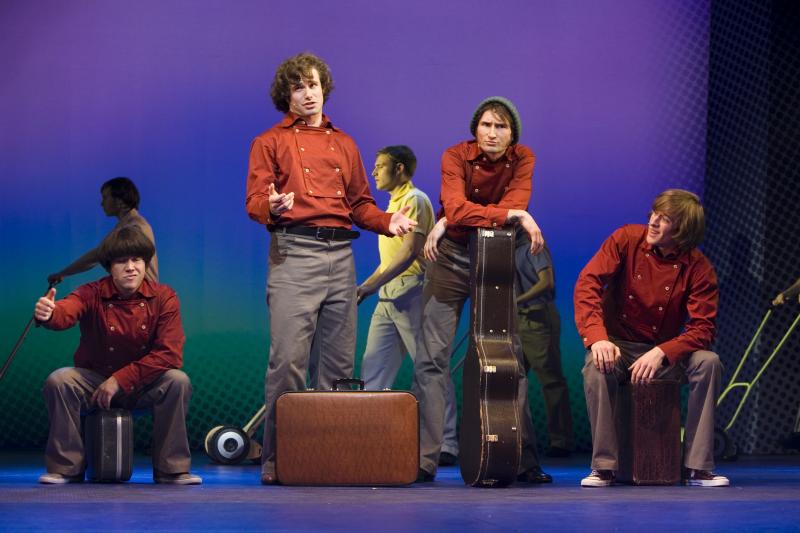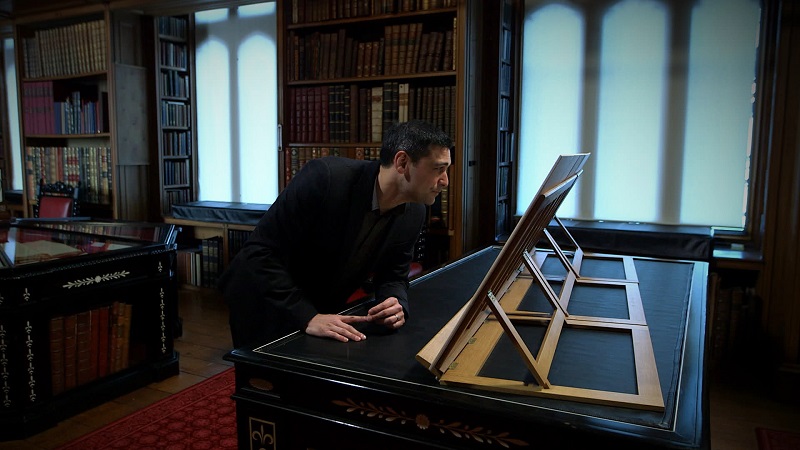The Beauty of Anatomy, BBC Four | reviews, news & interviews
The Beauty of Anatomy, BBC Four
The Beauty of Anatomy, BBC Four
Adam Rutherford's exploration of Leonardo and the dark art of human dissection

If the idealised human body forms the heart of the classical tradition in Western art, the close study of nature is its lifeblood. It is inevitable then that artists have sought better to understand anatomy, and there are many examples of artists whose knowledge of the human body was more than skin deep.
With no shortage of material at his disposal, Dr Adam Rutherford, a scientist “fascinated by anatomical images”, had everything he needed to kick off tonight’s episode in rip-roaring fashion. He promised “some of the greatest works of art in the world” and enthused, “I want to find out exactly how anatomy has inspired art, and art, anatomy.” With contributions from Oxford art historian Professor Martin Kemp, and fleeting but reassuring glimpses of paintings by Mantegna and Botticelli, this was shaping up to be a broad survey of a mutually enriching exchange between art and anatomy.
 Instead, Rutherford got bogged down in a long and detailed introduction to the work of Claudius Galen, a Roman physician whose medical theories and insights into human anatomy dominated Western medicine until the 19th century. In a Book of Hours from 1498, a beautifully illustrated diagram of a man, abdomen open to reveal his internal organs, showed just how little progress had been made since Galen’s time some 1300 years before. Annotated with instructions on when to bleed patients according to the position of the sun and stars, this was pretty terrifying evidence that, in the words of expert Dr Caroline Petit, “anatomy is theology in the Middle Ages.” All the more remarkable then, that by the time this little book was produced, Leonardo da Vinci had already embarked on the 200 anatomical drawings that would signal a new era in the understanding of the human body.
Instead, Rutherford got bogged down in a long and detailed introduction to the work of Claudius Galen, a Roman physician whose medical theories and insights into human anatomy dominated Western medicine until the 19th century. In a Book of Hours from 1498, a beautifully illustrated diagram of a man, abdomen open to reveal his internal organs, showed just how little progress had been made since Galen’s time some 1300 years before. Annotated with instructions on when to bleed patients according to the position of the sun and stars, this was pretty terrifying evidence that, in the words of expert Dr Caroline Petit, “anatomy is theology in the Middle Ages.” All the more remarkable then, that by the time this little book was produced, Leonardo da Vinci had already embarked on the 200 anatomical drawings that would signal a new era in the understanding of the human body.
Despite the gulf of ages that separated them, Leonardo was in large part continuing Galen’s work. The dissection of human bodies was forbidden by the Romans, but by the end of his life, Leonardo claimed to have dissected 30 corpses, and his meticulous drawings are bursting with the wonder and excitement of a pioneer on virgin territory.
Remarkable and powerful they most certainly are, but Rutherford was ill-equipped to venture beyond the realms of the scientific, clearly happiest when remarking on the anatomical accuracy of the drawings, or noting Leonardo’s pleasing tendency to use creative license where knowledge failed him. Having never dissected a human female, Leonardo based a drawing of the female reproductive organs on those of a cow, with predictably hilarious results.
The obligatory wander through the streets of Florence was a vague gesture in the direction of some broader, artier consequences to Leonardo’s discoveries, but Rutherford, understandably reluctant to exceed his own expertise, avoided specifics, preferring instead to speak generally about the “creative potential of the human form”.
At one point, discussing the “dark art” of human dissection, Rutherford touched on Leonardo’s personal experience in a way that began, perhaps, to relate his activities as a scientist to his work as an artist. Recalling Leonardo’s comment that there was a high price to pay for the rewards of dissection, Rutherford said that “quite apart from the skulduggery, the amateur dissector had to overcome his natural repugnance and fear of spending the night with corpses”. And what skulduggery was this? Alas, we never found out.
Adam Rutherford’s passion for medical history is beyond question, but the scope of the programme was confused. It mostly restricted its definition of art to anatomical drawings, but there were so many hints at the broader cultural ramifications of Leonardo’s discoveries that its lack of genuine engagement with the visual culture of the Renaissance was frustrating. Perhaps the suggestion of art was there to provide sauce for an otherwise rather dry subject, but it takes more than a stroll through the Piazza della Signoria to make it work.
rating
Explore topics
Share this article
The future of Arts Journalism
You can stop theartsdesk.com closing!
We urgently need financing to survive. Our fundraising drive has thus far raised £49,000 but we need to reach £100,000 or we will be forced to close. Please contribute here: https://gofund.me/c3f6033d
And if you can forward this information to anyone who might assist, we’d be grateful.

Subscribe to theartsdesk.com
Thank you for continuing to read our work on theartsdesk.com. For unlimited access to every article in its entirety, including our archive of more than 15,000 pieces, we're asking for £5 per month or £40 per year. We feel it's a very good deal, and hope you do too.
To take a subscription now simply click here.
And if you're looking for that extra gift for a friend or family member, why not treat them to a theartsdesk.com gift subscription?

Add comment